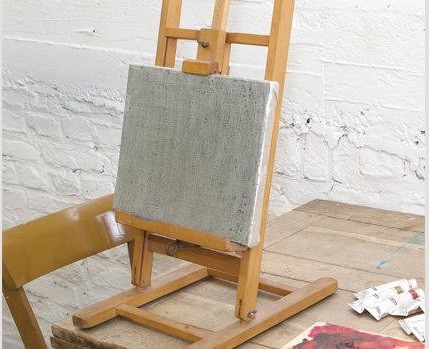"I swear, I don't even know her."
We have seen it before. The most recent denials being that of a politician and a footballer. DNA is proving many errant, rich hedonists, to be the lawfully-conceiving paters. Now it's, 'Hi, Dad! Long time, no see.' PS. 'What about my inheritance?'
Some call a child a creation, God's gift, even if not legitimate. There are other creations. A letter is one. A cooked dish is a fabulous creation; especially if it's Mom's. So is a woven tapestry. A cupboard, a table and the chair. Huts, buildings, castles, towers, magnificent bridges
- all are technically 'creations'.
Paintings, as creations, are a constant source of dispute. Except Pablo Picasso, and maybe the self-exiled MF Husain, one hardly remembers an artist making a pile in his lifetime. All masters are usually venerated only after death. That is the time when the legitimacy, or illegitimacy, of their paintings is put to the test.

Not knowing a Constable from a Rembrandt, this writer would be hard-pressed to determine the authenticity of a painting. One has to study brush strokes, chemicals and the type of paint used, the canvas or backing, or some other arcane stuff. These are the tell-tale marks that separate an original from a fake, a copy. Masters' assistants have been known to duplicate, both style and tools, to create original counterfeits.
You be the judge on this mystery about one such 'masterpiece'.
A painter's works fetch millions of dollars. One painting is put up for sale by one Robert Fletcher, who claims certain evidence in favour of genuineness. He says that he was a parole officer in the mid-1970s; a convicted man named Peter Doig had painted the art piece in question and that he had seen Doig paint it.
Peter Doig, now famous as a multi-million-dollar artist, refuted all that Fletcher said. He denied that he was ever in jail. He did not use those materials or canvas, in this case, in the 1970s. Moreover, a man named Pete Doige (with the extra 'e' in the second name), was in jail at the suggested time and had been painting there. According to Doig, the painting was not his, and he had not sold it to Fletcher for 'a hundred bucks'. In short, he was not the 'father'.
Before we answer this riddle, it may be wise to consider the alternatives. Doige, the convict, sells a painting to Fletcher while in jail. Did Fletcher know of the similarity in names and thought he could make a few millions after 40 years, by selling a fake? Did Doige, the incarcerated, know of the real Doig and sold canvasses in that name? Was it really a Doig, discarded by the painter in a huff, not happy with the work? Many masters have been known to do that, just as writers tear up page after page. Who, and what, is right?
The law has thought of these possibilities and the US has a statute in place. But it was meant to weed out fakes when the artist was dead. Experts, judges and juries were to decide on the validity of claims. Now, here was a man disclaiming 'paternity', a man very much alive.
The Visual Artists Rights Act allows an artist to prevent the use of his or her name as the author of 'any work which has been distorted, mutilated, or modified,' so as not to be prejudicial to the artist's standing. So, when he says, 'Not mine', what are the authorities supposed to do? Does the present owner have a priceless canvas in his hands, or just a piece of cloth?
In India, we have procedures to check the authenticity, or otherwise, of signatures. If a person claims a sign, even an 'X', as his, it is accepted. If he disputes the signature, 27 samples are taken. They are analysed by the approved forensic laboratory and its report presented to the court, where an almighty battle ensues about the validity of the report itself. Then, what about a painting, or a sculpture, or a showpiece? Whose word is to be taken as the truth and who decides?
What if someone, going through ancient manuscripts, found a da Vinci note that said that his student had wasted time on the painting of a woman with a road, a bridge and a volcano behind her? Will the Louvre close down and Paris lose its charm? OMG!
The author swears he did not 'create' the article above. Wanna prove he did?
Courtesy: Moneylife
Join LAWyersClubIndia's network for daily News Updates, Judgment Summaries, Articles, Forum Threads, Online Law Courses, and MUCH MORE!!"
Tags :Others











